
Unique properties of chamomile are used to treat many diseases of the respiratory tract, including cough. It is used independently and as part of medical fees. The plant is popular in traditional and folk medicine. Does the chamomile help? It gives a good effect, has very few contraindications, and costs quite inexpensively. By the way, daisy is used not only to treat the throat. The link can be read if it is possible to wash the nose with chamomile to the child.
Content
Content
- 4.1 Infusions
- 4.2 Inhalations
- 4.3 Rinses
The effectiveness of
The medicinal value of chamomile is based on its chemical composition. Such elements and compounds have been identified:
- hamazulen( chamomile is due to its antihistamine and antibacterial properties and specific odor);
- essential oil( its aroma is soothing);
- derivatives of quercetin( has antibacterial and anti-edematous effect);
- caprylic acid( has antifungal activity);
- salicylic acid( exhibits antiseptic effect);
- nicotinic acid( removes toxins);
- vitamin C, carotene( immunostimulants );
- apigenin( relieves inflammation);
- gum( reduces irritation after the use of aggressive medicines);
- polysaccharides.
On the photo - chamomile from a cough:
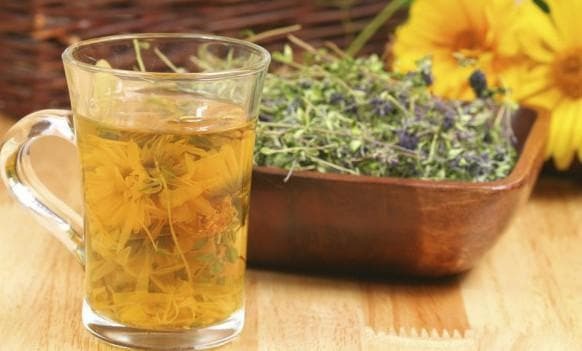
Prepare a daisy in a flowering form from May to the end of summer. For medicinal purposes, inflorescences of the plant are used, collected in dry weather and dried without access to light. From the collection time depends the effectiveness of the plant: in the period of active flowering chamomile accumulates the maximum amount of active substances.
Over time, baskets lose their properties, begin to disintegrate. At the same time, essential oils evaporate. To store the dry raw materials of chamomile can be no more than a year in a closed container in a dark place.
Drugs with chamomile
In traditional medicine, chamomile extract is used for the preparation of such drugs used in the treatment of cough, as:
- "Rotocanum"( Rotocanum) - topical phytopreparative drug based on chamomile, calendula and yarrow;
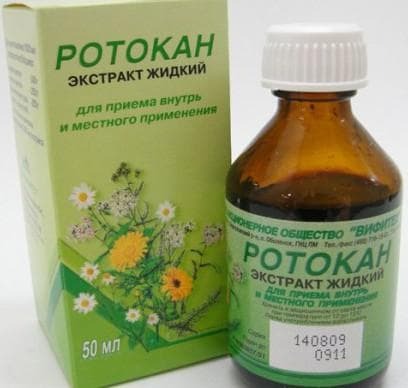
- "Romazulan"( Romazulan) - concentrate for the preparation of solution, is used for the treatment of inflammatory diseases of ENT organs;
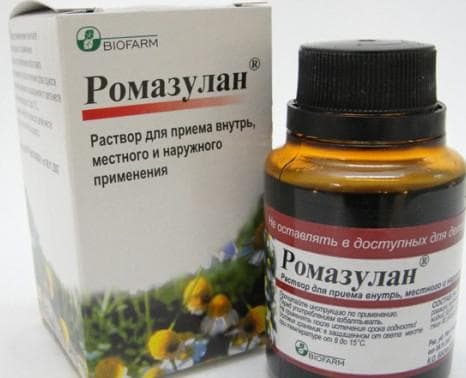
- Recutanum is a preparation for internal and external use;
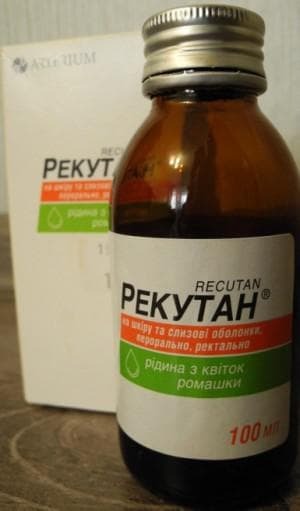
- "Rinotays" - cream with chamomile from Dr. Theiss for removing irritation of the skin around the nose, which is observed in ARVI.
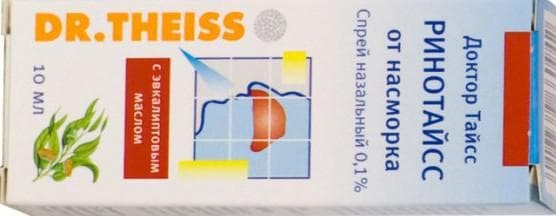
In pharmacies, you can buy ready-made tablets with chamomile from the company "Parapharm" series "Secrets of Longevity".These are not extracts of grass, but crushed and pressed by special technology plant itself. They are convenient to apply and dose. Also you can buy chamomile in the form of tea in bags. In this case, you do not need to think about the dosage of the drug: one sachet is designed for a single dose.
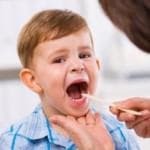
Read how to treat laryngitis in a child 4 years old.
In the photo you can see what the chronic tonsillitis in children looks like.
Find out what to do if the child coughs when asleep: http: //prolor.ru/g/lechenie/ rebenok-kashlyaet-po-nocham-dnem-net.html.
Use at home
A wide range of actions of drugs from chamomile allows you to use them internally and externally. For this purpose, dry materials are prepared:
- decoctions;
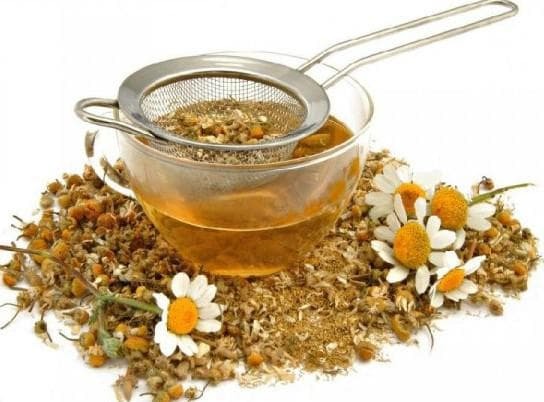
- infusions;
- teas;
- compresses;
- rinsing;
- solutions for inhalation and rinsing, chamomile inhalation with cough
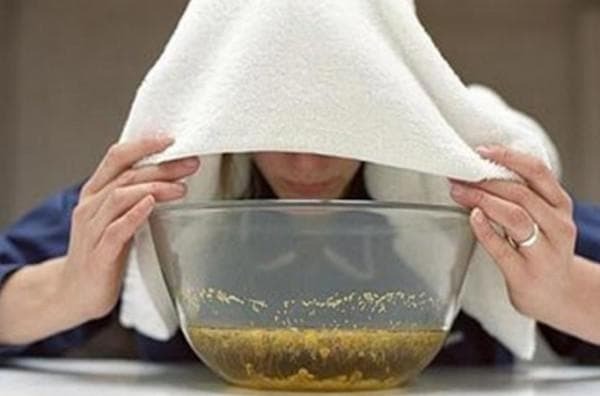
Use them freshly prepared. In this case the camomile chemist exhibits such pharmacological properties:
- is spasmolytic;
- antiseptic;
- is an anti-inflammatory;
- diaphoretic;
- is a sedative;
- is an analgesic.
Preparations from chamomile reduce puffiness, promote tissue regeneration. Their action is aimed at removing irritation. Chamomile will help with:
- a sore throat that causes coughing;
- by dry non-productive cough;
- residual events after bronchitis;
- acute inflammation of the ENT organs.
Remember that cough can be caused not only by ARVI, but also by bronchitis, asthma, pneumonia, whooping cough, tuberculosis and even heart diseases. Treatment should be started only after a complete diagnosis.
Camomile is one of the most harmless plants, but there are contraindications:
- is an individual intolerance;
- mental disorders.
The overdose of drugs with chamomile may lead to negative consequences. In these cases, there is a headache, a decrease in muscle tone, and a cough may increase.
For adults
In the treatment of cough in adults, both freshly prepared preparations from dry chamomile and solutions of pharmacy concentrates are used. For aromatherapy and inhalations take concentrated essential oils of chamomile pharmacy.
Infusions and teas
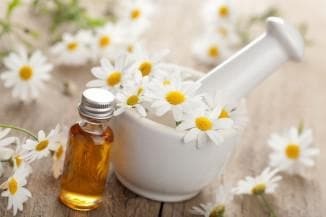
The long-recognized cough remedy are teas and infusions of chamomile. They must be properly brewed:
- in a cup pour a tablespoon of dry chamomile stuff;
- pour the grass with a glass of boiling water;
- insist, pre-wrapped 30-45 minutes;
- is filtered, squeezed cake;
- take tea warm, you can add honey;
- time of reception - after meal, three times a day.
This tea, drunk at night, will provide a restful sleep and a cough relief. To enhance the effect, you can drip a few drops of chamomile and eucalyptus into the aroma lamp and breathe this air for half an hour.
Chamomile tea is a time-proven antipyretic. It also strengthens immunity in infectious diseases accompanied by coughing.
Inhalations
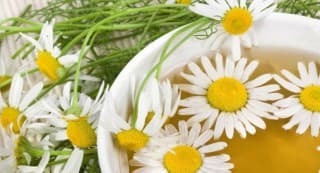
The most effective form of application of chamomile are inhalations. For this, the herb of camomile chamomile is boiled( 2-3 tablespoons per liter of water).The agent is put on fire, brought to a boil and removed, or pressed for 10-15 minutes on a steam bath.
It takes 10-15 minutes to breathe pairs of chamomile. After the procedure, you can not go out for 2 to 3 hours. Throat is better in this period not to strain. Within an hour it is worth to refrain from eating and drinking.
Rinse

For rinses, prepare decoctions and infusions. The recipe for the decoction does not differ from chamomile tea. Tinctures for adults are prepared for alcohol. To do this, dry chemist's chamomile is poured 70% with alcohol or vodka and insists in a dark place 3-4 weeks( proportion 1:10).Then tincture is filtered and stored in a cool dark place closed.
For a rinse take a teaspoon of tincture and diluted with a glass of warm boiled water. Rinse the throat with this solution every 3 hours to 4-5 times a day. The procedure helps to get rid of the inflammatory processes in the throat that cause coughing. Here you can find more information about the treatment of dry cough folk remedies.
For children
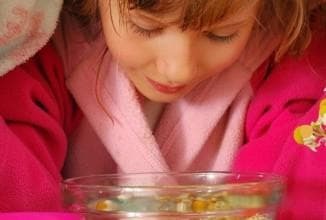
Inhalation with chamomile will help get rid of cough faster than taking pills and syrups. During the procedure, the active substances fall directly into the breeding sites of infections. Couples of chamomile will help to withdraw phlegm from the bronchi, remove swelling and soothe the mucous membrane of the nasopharynx. However, inhalations are indicated for children older than 3 years. Due to the use of hot water, the procedure can be dangerous for babies due to a parent's oversight.
Breastfeeding baby( babies) from sputum will help rid the chamomile tea. Children up to three years inside the chamomile is prescribed from the calculation: a teaspoon of a glass of boiling water. For one reception the child should drink no more than 1/3 cup. Brew tea in a thermos and give the baby three times a day after eating. The daily dose for older children is no more than a tablespoon. Tea is brewed if the child does not have an allergy to chamomile, give it with honey.
But if the baby coughs up green mucus, there is a sore dry cough or the child is choked with phlegm, show it to the pediatrician. Self-medication in these cases can be dangerous. By the link you can find out why the child does not get cough.
When Pregnant

How to get rid of a cough during pregnancy? Phytotherapy during pregnancy is prescribed only after consultation with a doctor. If cough is caused by ARVI and its complications, inhalation with chamomile can be used. To do this, 2 tablespoons of chamomile are poured with a liter of boiling water, heat the mixture on a steam bath, remove from heat, insist about 5 minutes and breathe in pairs with your mouth for 10 minutes, covering your head with a towel. The procedure should be carefully so as not to burn the skin and mucous membranes.
At elevated temperatures, inhalations are prohibited. In such cases, they contribute to the activation of inflammatory processes in the bronchi. If there is no high temperature, inhalation with chamomile will soften the dry cough caused by irritation and sore throat.
Teas and infusions with chamomile in pregnancy are not prohibited. External application is absolutely harmless in the absence of allergies. Drugs with chamomile can be consumed only if absolutely necessary, after consulting a doctor. Plants contribute to the production of ovaries of estrogens. These hormones can trigger a miscarriage.
If you decide to treat a cough with chamomile chamomile bought in retail chains, pay attention to its composition. This is especially important for children and pregnant women.
Sometimes other flowers are added to chamomile flowers, which are not always recommended for use in these groups. And do not forget to look at the collection date: chamomile is kept no longer than a year. Only in this case, vegetable raw materials will benefit your body. Perhaps you will also be useful information about the treatment of an allergic dry cough in a child. It describes how to treat a wet cough in a child.
